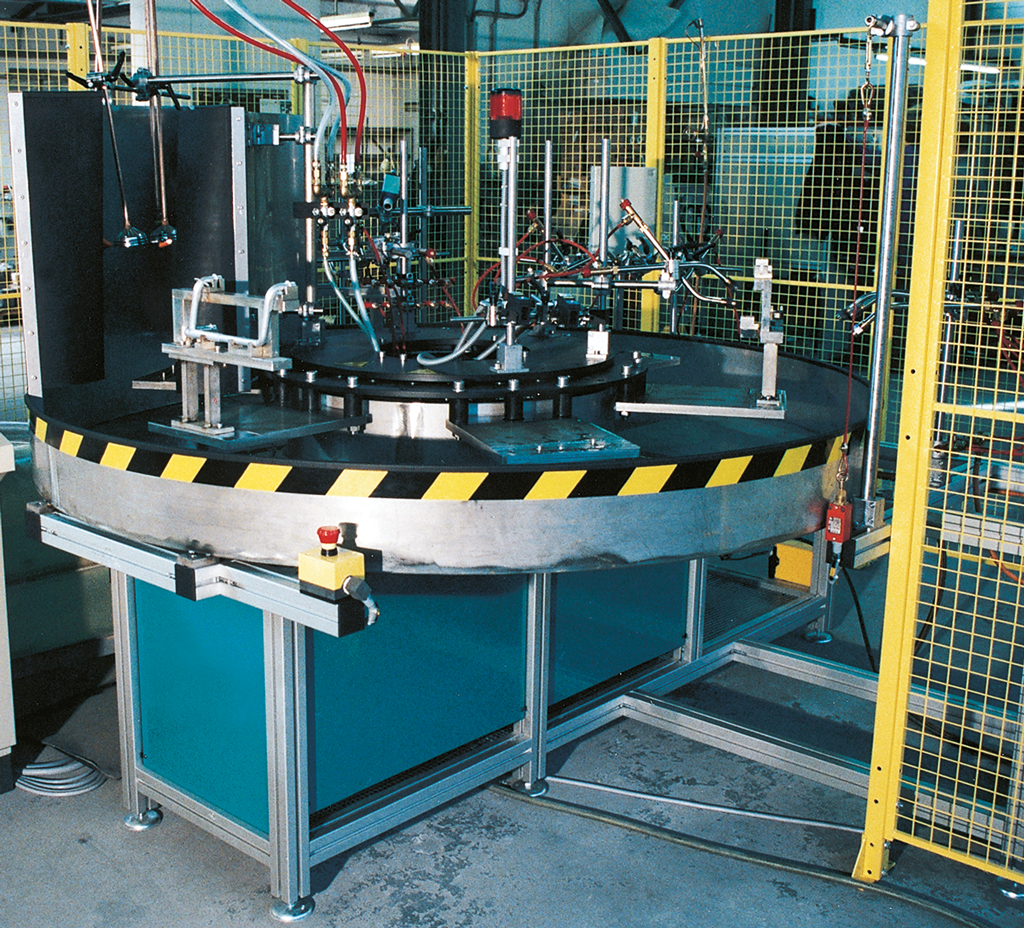Aluminium Flame Brazing – Basics Part 5
BASICS
Automation
The procedure described above is for manual flame brazing using a hand held torch and visual indicators (flux melting) for monitoring process parameters. Flame brazing is easily automated and the level of automation can vary between simple shuttle systems to fully automatic brazing carousels including optical pyrometry temperature measurements. Regardless of the level of automation, the principles of manual flame brazing still apply.
Shuttle Systems
The shuttle system consists of a framework on which one or two components requiring brazing are mounted where the motor driven framework laterally shuttles the braze joints between one or two braze stations each equipped with opposing flames (the equivalent of a double headed torch). The shuttle is usually configured such that one or two new components requiring brazing can be installed on the return of the shuttle to its original position and the brazed units unloaded.
Carousels
Flame brazing carousels are at the upper level of automation. The carousels move assembled components to be brazed continuously from flame station to flame station arranged in a circular pattern (hence the name carousel). Usually, each flame station consists of twostationary and opposing torches between which the joint to be brazed is indexed. As the component moves from station to station, the joint temperature gets progressively hotter. The number of stations depends on the joint configuration and weight. The joint is thus uniformly heated to brazing temperature. The last station where brazing takes place may be equipped with an optical pyrometer to monitor braze joint temperature. After brazing, the joint may be cooled by air or water spray. Other options include automatic application of filler metal and/or dispensing of flux (filler metal ring, flux/brazing paste).
Optical Pyrometry Measurements
Automatic flame brazing carousels are often equipped with infra-red pyrometers to measure the temperature of the braze joint area. The information is fed to a computer and the computer ‘tells’ the torches to flip away from the joint when the proper temperature is reached. The pyrometer however cannot determine an absolute accurate temperature. As aluminum heats up, the oxide layer changes and therefore the emmissivity of the surface changes and it becomes difficult to modify the pyrometer to track these changes dynamically. It is possible to get reproducible accurate relative temperatures of the heat affected zone, but not of the joint itself. In other words, optical pyrometry measurements can be used to monitor the consistency of the brazing process from part to part (for the same given part), but the information by itself for a single part would not be that useful.
Bimetallic Joining
Flame brazing aluminum to another metal such as bronze, copper, steel and stainless steel is possible, but requires special care and attention. Dealing with all Al-metal combinations in detail is beyond the scope of this brochure, but a few comments on Al-Cu joining is noteworthy, since this combination is common in the refrigeration industry (copper tube to aluminum roll-bond panel, for example).
There is a eutectic between Cu and Al at 548 °C. When the flux melts and the surface oxides are removed, inter-diffusion of Al and Cu is rapid and unavoidable. This means that at braze temperature, the Al and Cu materials are quickly consumed to form the eutectic metal. Management of time and temperature is critical to minimize the inter-diffusion and metal consumption. There is an advantage however. Since filler metal is created in-situ, there is no need to supply filler metal to the joint. The only requirement is that the design of the joint allows metal consumption without sacrificing joint integrity.
Conclusions
From the preceeding discussions, it is evident that NOCOLOK ® flux flame brazing is not a complicated process and that if the fundamentals of manual brazing are followed, any level of automation can be achieved. The most important aspects of the discussion are as follows:
- NOCOLOK ® flux melts just before the filler metal temperature.
- Once molten, the flux remains active only for a short period before drying out.
- Preplacing the filler metal in the joint is preferred, but with some skill may be fed into the joint after the flux melts.
- Temperature uniformity is critical and excessively high surfaces temperatures must be avoided.
Hinterlasse einen Kommentar
An der Diskussion beteiligen?Hinterlasse uns deinen Kommentar!




Aluminum and bi metal brazing flame brazing with hand